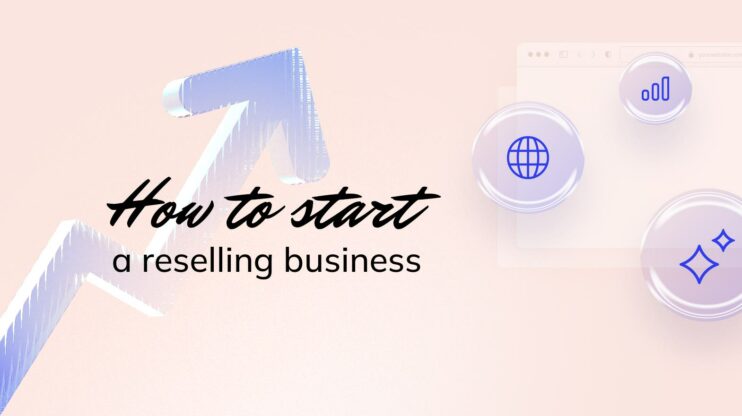Penetration pricing is a strategic approach where companies introduce new products at low initial prices to gain market share quickly. This strategy aims to attract a large customer base by offering affordable prices, often at the expense of short-term profits, to establish brand loyalty and long-term profitability.
This article discusses the key concepts of penetration pricing, its pros and cons, implementation techniques, and comparisons to other pricing strategies. Penetration pricing allows businesses to disrupt markets, rapidly expand their customer base, and create strong brand recognition, making it an attractive choice for fast growth in competitive industries.
FAQ
What is a penetration strategy example?
What is penetration vs. skimming pricing strategy?
What are the advantages and disadvantages of penetration pricing?
How does Netflix use penetration pricing?
What is penetration pricing?
Penetration pricing allows companies to sell new products at low prices. This helps them get more customers quickly. The goal is to grab a big part of the market fast.
Companies use the penetration pricing strategy to get many people to buy their products immediately. They want to beat other companies and get customers to like them.
The main idea is to sell more by charging less at first. This can work well for new products or when a company enters a new market. The low price helps people notice the product and want to try it.
Companies might lose money at first with this method. But they hope to make it back later when they raise prices or sell more.
Different pricing strategies
While penetration pricing is popular for rapid market entry, there are other effective pricing strategies businesses can consider, depending on their goals, product type, and target customer base. Below are some common alternatives:
Loss leader pricing
Loss leader pricing involves setting prices for certain items lower than their cost to attract customers. This strategy is particularly effective in retail and ecommerce, where businesses aim to boost foot traffic or website visits and generate sales on other higher-margin products. For example, a grocery store might sell basic items like milk at a loss, betting that customers will also purchase other, more profitable items. This strategy emphasizes customer acquisition by drawing customers with appealingly low prices while aiming for higher profits on related purchases.
Freemium pricing
Freemium pricing offers a basic version of a product or service for free while charging for premium features. This strategy is popular among digital products, such as software and mobile apps, where the free version attracts a wide user base.
Once users become familiar with the product and recognize its value proposition, they are more likely to pay for added features. Freemium pricing focuses on brand recognition and customer acquisition, with the ultimate goal of converting free users into paying customers.
Value-based pricing
Value-based pricing sets prices according to the perceived value a product provides to customers, rather than based on production costs. This approach is particularly useful for differentiated products or items with unique benefits. Companies using value-based pricing focus on delivering a compelling value proposition that justifies a higher price point.
For instance, a software provider might charge more for a product with advanced security features, appealing to businesses that prioritize data security. Value-based pricing allows companies to establish long-term brand equity by positioning themselves as premium solutions in their markets.
Predatory pricing counterstrategies
Businesses facing competitors using predatory pricing might adopt strategies that highlight their unique benefits, emphasize product quality, or appeal to brand loyalty. For example, a company might showcase its commitment to high-quality customer support or exclusive product features that competitors lack. While not a direct pricing alternative, these strategies help businesses maintain customer trust and avoid a race to the bottom that could harm long-term brand equity.
Counteracting the race to the bottom
Companies concerned about race-to-the-bottom scenarios—where they and competitors keep lowering prices to gain market share—may avoid direct price reductions. Instead, they can use penetration pricing counterstrategies such as bundling products, offering replacement parts at a discount, or adding customer-centric services. These tactics add value without undercutting profitability.
What are the pros and cons of penetration pricing strategy?
Penetration pricing can help new products gain market share quickly, but it also comes with risks. Let’s take a look at the pros and cons of the penetration pricing strategy.
Pros
Penetration pricing strategy has multiple advantages for businesses looking to quickly establish a strong market presence.
- Attracts attention quickly: Low prices grab customer attention, drawing in a large volume of buyers right from the start.
- Rapid market share growth: Allows you to capture a substantial market share early on, making it difficult for competitors to catch up.
- Builds brand loyalty: Customers who try your product at an attractive price may remain loyal even as prices increase over time.
- Encourages customer retention: For subscription models, low initial pricing can lead to long-term customer retention, as users get accustomed to the service and are less likely to switch.
- Discourages new entrants: A strong market presence with low prices can act as a barrier, discouraging new competitors from entering the market.
Cons
While penetration pricing can help grow market share quickly, it comes with several potential drawbacks.
- Lower initial profit margins: Starting with low prices can reduce profits early on, making it challenging to cover costs if sales don’t scale quickly.
- Risk of financial loss: If demand doesn’t increase as expected, the low prices may lead to financial losses.
- Perceived low quality: Some customers may associate low prices with inferior quality, which can harm your brand image.
- Difficulty in raising prices later: Once customers are used to low prices, raising them can lead to customer attrition.
- Potential for price wars: Competitors may lower their prices in response, leading to a price war that negatively impacts profit margins across the industry.
Implementing the penetration pricing strategy
Though penetration pricing strategy seems attractive for companies, it requires careful planning and execution to be effective. Let’s look at how to implement it for your business.
Set initial prices
To set initial prices, look at your costs and competitor prices. Pick a price that’s lower than competitors but still profitable. You can even sell at a loss briefly to attract customers. Just make sure you have enough cash to cover losses.
Consider your target market’s price sensitivity. If buyers care a lot about price, a bigger discount may work better. Test different price points with small groups before a full launch. Think about how long you’ll keep prices low. Having an end date creates urgency for customers to buy now.
Adjusting prices over time
Plan price increases from the start. Raise prices slowly to avoid shocking customers. You might bump prices up 5-10% every few months. Watch how sales change as you increase prices. If sales drop sharply, you may need to slow down increases.
Add new features or improve quality as you raise prices. This helps justify the higher cost to customers. Keep an eye on competitors. If they lower prices to match you, you may need to delay increases. Your goal is to reach a sustainable price that’s still attractive to customers. This often takes 6-12 months or longer.
Understanding price elasticity
Price elasticity shows how demand changes when prices go up or down. Some products are very sensitive to price changes. Others don’t see much change in demand. Elastic demand means sales drop a lot when prices rise. Inelastic demand means sales stay steady despite price changes.
To figure out elasticity:
- Track sales at different price points
- Calculate the percent change in quantity sold vs price
- Look for patterns over time
Products with many substitutes tend to be more elastic. Unique or essential items are often inelastic. You can test different prices to see how your customers react. This helps you find the sweet spot that maximizes your profits.
Avoiding predatory pricing
Predatory pricing happens when you set prices so low that you harm competition. This can get you in legal trouble. To stay safe:
- Check your costs carefully
- Make sure you’re not selling below cost
- Set a clear end date for your low intro price
- Keep records of why you chose your pricing
- Watch how competitors react. If they can’t compete, you may need to adjust
Be ready to prove your low price isn’t meant to hurt other businesses. It’s just to enter the market. This can help if anyone questions your tactics.
Analyze production costs
Looking closely at production costs is key for penetration pricing. Companies must know their marginal cost – the cost to make one more unit. This is the price floor. Selling below this loses money on each sale.
Fixed costs like rent and equipment also matter. These stay the same no matter how much you make. Spreading them over more units lowers the cost per item. But it takes high sales to do this.
Labor and material costs can change too. Companies should watch for ways to cut these. New tech or better processes may help. The goal is to get costs as low as possible to support a low price.
Capture market share
To capture market share, you should set low prices for their products. This makes them more appealing to buyers compared to rivals. For example, a new phone maker might price its devices 20% below top brands to attract customers.
Low prices can also help companies enter new markets. A food brand could offer its snacks at discount prices in a new country to get people to try them. As more people buy the product, the company’s market share grows.
Some firms use deals to grab market share. They might offer:
- Buy one, get one free
- Bulk discounts
- First-time customer specials
These tactics can bring in new buyers and take sales from competitors.
Build brand loyalty
Getting customers is just the start. Companies also need to keep them coming back. Here are some ways to build brand loyalty:
- Great customer service
- High-quality products
- Rewards programs
Good service makes buyers feel valued. When people have good experiences, they’re more likely to stick with a brand. Quality products also keep customers happy and reduce returns.
Rewards programs give buyers a reason to keep shopping with the same company. A coffee shop might give a free drink after 10 purchases. This encourages repeat visits and builds habits.
Some brands create apps to stay connected with customers. These apps can offer special deals and make shopping easier. The more someone uses an app, the more loyal they often become to that brand.
Analyze your market
Market analysis looks at the current state of your industry. It covers things like:
- Number of competitors
- Market size and growth rate
- Customer segments and needs
- Barriers to entry
You should research your target customers. Find out their buying habits, preferences, and how much they’re willing to pay. This helps you set prices that appeal to them. Look at what your competitors are charging. Are there gaps you can fill with your pricing? Identify any seasonal trends or upcoming events that could impact demand.
Assess economic factors
Economic factors play a big role in penetration pricing. Companies need to look at costs and savings to set the right low price.
As companies make more products, they can often lower their costs. This is called economies of scale. It means the cost per item goes down when making larger amounts. For example, buying materials in bulk is cheaper. Using machines more hours each day spreads out their cost. Training workers to do tasks faster also cuts costs.
Companies can pass these savings to buyers through lower prices. This helps them grab more market share. But they need enough cash to cover losses at first. It may take time to build up sales volume and see the cost benefits.
Position your brand with penetration pricing
Penetration pricing can shape how customers see your brand. It affects your image and how loyal people are to your company. Let’s look at how this pricing strategy impacts your brand.
Penetration pricing strategy can make your brand seem affordable and customer-friendly. People may view you as a smart choice that gives them good value. This can help you stand out from pricier competitors. But be careful. If your prices are too low, some might think your products are cheap or low-quality. It’s key to balance low prices with good quality to keep a positive image.
You can use marketing to show why your prices are low. Explain that you want to help customers save money. This can make your brand look caring and smart with money.
Sustaining brand recognition and loyalty
Getting customers with low prices is just the start. You need to keep them coming back. Here are some ways to do that:
- Give great customer service
- Offer loyalty programs with perks
- Keep product quality high
- Listen to customer feedback
As you raise prices later, make sure customers still feel they’re getting value. You can add new features or improve your products to justify higher prices.
Consider building a community around your brand. Use social media to connect with customers. Share tips and ask for their ideas. This can make people feel close to your brand, even as prices go up.

Create your online store in minutes!
Looking to sell online? Develop and launch your store with 10Web AI Ecommerce Website Builder.
Evaluate pricing outcomes
Tracking key metrics helps you measure how well your penetration pricing strategy is working. You’ll want to look at sales numbers and profits to measure success.
When using penetration pricing, you aim to sell more products quickly. Keep an eye on how many units you’re selling each day, week, and month. Compare this to your sales before the new pricing. Are you seeing an uptick?
Look at your turnover too. This is the total money coming in from sales. Even with lower prices, higher sales volume can lead to more overall revenue. Track how your turnover changes over time. You can use tools like sales reports and dashboards to monitor these numbers easily. Set goals for sales volume and turnover increases. This helps you know if your strategy is on track.
Strategies for different market conditions
Penetration pricing strategy works differently based on the market you’re in. The size and type of market impact how you set low prices to gain customers. Let’s look at two common market types you might try entering.
Penetration pricing for specialized markets
In specialized markets, you can use the penetration pricing strategy to stand out. These markets have fewer competitors and very specific customer needs. You might offer a low intro price on a specialized product to get noticed. This helps you build a loyal customer base quickly.
For example, a new organic baby food brand could set prices below other organic options. This gets health-conscious parents to try the product. As more people buy it, you can slowly raise prices.
Niche markets often have customers willing to pay more long-term. So your goal is to get them to try your product first with a low price.
Penetration pricing for mass markets
Mass markets need a different approach. You face more competition and price-sensitive customers. Your low price needs to be eye-catching enough to pull people away from brands they know.
A good tactic is to price just below the most popular option. This makes customers feel they’re getting a deal on a similar product. You might also offer bulk discounts to encourage larger purchases.
In mass markets, you need to plan for how rivals might respond. Big companies can afford to match your low prices. Make sure you can sustain your pricing long enough to gain market share.
Competitive response to penetration pricing
When a company uses the penetration pricing strategy, competitors often react to protect their market share. This can lead to price wars and force businesses to adapt quickly.
Potential for price wars
Price wars can happen when companies keep lowering prices to beat each other. This can hurt profits for everyone involved. Some ways businesses try to avoid price wars are:
- Focus on product quality instead of just price
- Offer special deals or bundles to add value
- Target different customer groups
- Improve customer service
Companies need to be careful not to start a race to the bottom. Setting prices too low for too long can damage the whole market.
Adapt to competitive markets
To deal with penetration pricing from rivals, companies can:
- Cut costs to match lower prices
- Highlight unique product features
- Build customer loyalty programs
- Find new ways to stand out
It’s key to watch what competitors do and be ready to change quickly. You might need to adjust your marketing or even your products. The goal is to show customers you offer good value, not just low prices.
Mitigate financial risks
Low prices mean less profit per sale. This can strain your finances. Here’s how to manage the risks:
- Plan for higher sales volume to make up for small margins
- Set a budget for how much loss you can handle
- Have backup funding ready in case sales are slow
- Track your cash flow weekly
- Raise prices slowly once you gain customers
Think about offering some premium options. These can boost your profits while you keep base prices low. Also, look for ways to cut costs without hurting quality.
Real-world case studies in penetration pricing
Netflix and Redbox used low prices to attract customers and gain market share. These companies changed how people watch movies and TV shows.
Netflix in the streaming market
Netflix started as a DVD-by-mail service. In 2007, it launched streaming video. Netflix priced its streaming plan at just $7.99 per month. This low price helped Netflix grow fast.
The cheap price got many people to sign up. It was much less than cable TV. Netflix also made its own shows, giving people more reasons to join.
By 2013, Netflix had over 30 million subscribers. The low price helped Netflix beat bigger rivals like Blockbuster. Netflix now has over 230 million subscribers worldwide.
Redbox and the physical rental market
Redbox rented DVDs from vending machines. It charged just $1 per night for new movies. This was much cheaper than video stores like Blockbuster. Redbox put its machines in busy spots like grocery stores. This made renting easy and cheap. People could grab a movie while shopping.
The $1 price drew in many customers. Redbox grew to over 40,000 kiosks by 2013. It became the top DVD rental service in the U.S. Redbox’s low price helped it succeed as Blockbuster failed. But later, streaming services like Netflix cut into Redbox’s business.
Spotify in the music streaming market
When Spotify entered the U.S. market in 2011, it offered free, ad-supported streaming as well as premium options at low introductory rates (like $9.99/month) compared to other digital music purchase options. This pricing attracted users who were reluctant to buy songs individually.
Spotify’s low initial prices and extensive music catalog made it the preferred streaming service. By getting users hooked on the ad-supported free version, it could later upsell to premium. Today, Spotify has over 200 million paying subscribers globally, leading the music streaming market.
Amazon in the e-book market
When Amazon launched the Kindle and its e-book service, it priced many best-selling e-books at $9.99, often much lower than physical book prices. This aggressive pricing encouraged more readers to adopt e-books over traditional books.
This low price point disrupted traditional bookstores and positioned Amazon as a dominant force in the e-book market. It drove significant Kindle sales and has since allowed Amazon to dominate e-book sales with Kindle as the go-to device for readers.
Xiaomi in the smartphone market
Xiaomi, a Chinese smartphone manufacturer, offered high-quality smartphones at extremely low prices compared to competitors like Apple and Samsung. By maintaining tight control over its supply chain and focusing on online sales, Xiaomi kept costs low.
The low-cost, high-spec phones quickly gained traction in China and other emerging markets, allowing Xiaomi to become a major player. Its low prices attracted budget-conscious consumers, and Xiaomi eventually expanded its product line while maintaining affordability.
Uber in the ride-sharing market
Uber initially launched with lower prices than traditional taxi services to attract riders. In new cities, it frequently offered discounts or free rides to attract users to its app and encourage downloads.
The low initial prices helped Uber attract a substantial customer base, making it easier to recruit drivers and expand to new markets. Uber’s early pricing and expansion strategy significantly impacted the traditional taxi industry and established it as a leader in ride-sharing worldwide.
Each of these examples demonstrates how a penetration pricing strategy can be effective in breaking into competitive markets, attracting a user base quickly, and building long-term market share.
Conclusion
Penetration pricing strategy is effective for businesses seeking rapid market entry and long-term growth. With initially low prices, companies attract a broad customer base, establish brand recognition, and lay the foundation for customer loyalty. While this approach can temporarily impact profits, it creates a solid market foothold that can be monetized as prices adjust.
Implementing this strategy requires careful planning and constant market analysis to avoid financial pitfalls and manage competitive responses effectively. When executed thoughtfully, penetration pricing can drive significant growth and secure a competitive edge, as evidenced by companies like Netflix, Xiaomi, and Spotify. Follow the steps discussed in this guide to execute the penetration pricing strategy for your business.













